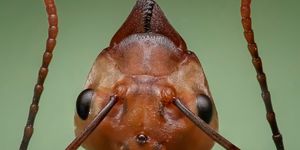Spaceflight Activates Dormant Herpes Viruses in Astronauts
Modern science is teaching us that long-term exposure to microgravity, such as living on the International Space Station from ten days to several months at a time, might be enough to trigger herpes in astronauts. Wait… what?
To be clear and upfront from the get-go, this doesn’t mean that outer space gives astronauts herpes. Instead, it just means that those astronauts already had a dormant herpes virus inside of them and that outer space stresses the human body enough to activate those viruses, sometimes to the point of shedding.
The herpes virus comes in all sorts of different strains, and outer space appears to trigger at least four of those in astronauts after they return from outer space, including Epstein-Barr virus (EBV), Varicella-zoster virus (VZV), Herpes simplex virus type 1 (HSV-1) in saliva, and Cytomegalovirus (CMV) in urine.
Many astronauts exhibited higher levels of stress hormones, including cortisol and epinephrine. Moreover, astronauts who stayed in space longer showed higher stress hormone levels and higher virus activation than those who stayed in space for shorter periods.
The findings reveal that spaceflight alters the human body’s immune function in interesting and unexpected ways, and understanding this is vital if we’re going to put human beings on other worlds, such as Mars or the Moon, for extended periods.








